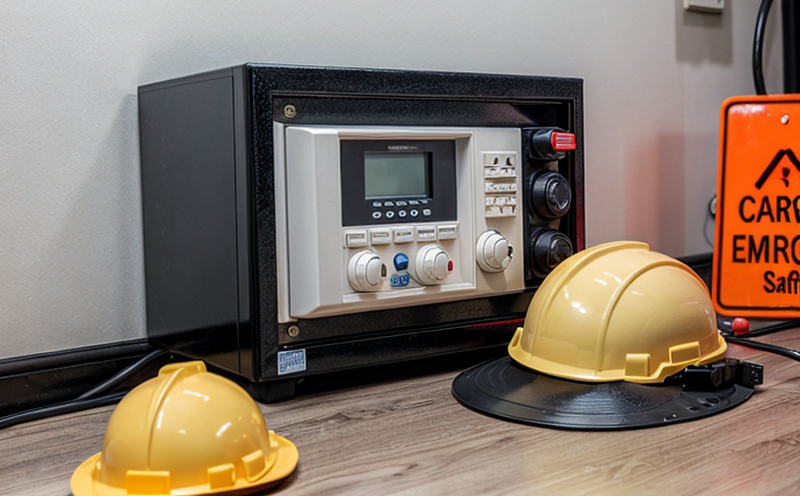FAA AC 25.1450 Oxygen Flow Rate Testing
The Federal Aviation Administration (FAA) Airworthiness Certification Standard AC 25.1450 mandates the testing of oxygen flow rate for life-support systems in aircraft to ensure passenger safety and compliance with aviation regulations.
This regulation is critical in aerospace because it ensures that all passengers, particularly those who may have respiratory issues or are incapacitated during flight, receive adequate oxygen supply from their masks. The standard outlines the procedures to verify that the oxygen flow rate of a system meets specified requirements under various conditions. This includes testing at different cabin altitudes and ensuring that the system can maintain safe levels of oxygen even in emergency scenarios.
The FAA AC 25.1450 requires that life-support systems, such as masks or other breathing apparatuses, have a flow rate that is sufficient to provide the required oxygen volume for at least ten minutes after the initial cabin altitude reaches an equivalent pressure of 8,000 feet above sea level and continues to rise.
The testing process involves simulating various conditions under which the system might be used during flight. These include different altitudes (up to 15,000 feet), varying ambient temperatures, and humidity levels that are representative of typical flight environments. The tests must also account for the weight of the individual wearing the mask, as this can affect the flow rate required.
The testing apparatus typically consists of a flowmeter connected to a breathing bag or mannequin simulating an adult passenger. The flowmeter measures and records the oxygen flow rate from the system into the bag or the mannequin's airway. This measurement is taken at different cabin altitudes, including 8,000 feet, 12,000 feet, and 15,000 feet.
The results of these tests are compared against the specified requirements outlined in AC 25.1450. If the oxygen flow rate does not meet the required standards at any point, further adjustments must be made to the system until it complies with the FAA's regulations. This ensures that the life-support systems on aircraft are reliable and safe for all passengers.
The importance of this testing cannot be overstated. In the event of an emergency, such as a rapid decompression or malfunction in the cabin pressure system, having a reliable oxygen flow rate is crucial to ensure passenger safety. The FAA's rigorous testing standards help manufacturers and operators meet these critical requirements, thereby contributing to the overall safety of air travel.
The testing process also plays a vital role in the development and certification of new aircraft models. By ensuring that all life-support systems comply with AC 25.1450, aerospace companies can obtain the necessary certifications required for commercial operation. This not only enhances the reputation of the manufacturer but also ensures passenger safety.
In addition to compliance with FAA regulations, testing oxygen flow rates in accordance with AC 25.1450 helps manufacturers and operators stay ahead of potential changes in aviation standards and industry best practices. By adhering to these stringent testing protocols, they can ensure that their products are not only compliant but also exceed the expectations set by regulatory bodies.
The results of FAA AC 25.1450 tests are typically documented in a detailed report that includes all test parameters, flow rate measurements, and comparisons against required standards. This documentation is crucial for compliance purposes and can be presented to aviation authorities during certification processes or audits.
In summary, the FAA AC 25.1450 oxygen flow rate testing is essential in ensuring passenger safety by verifying that life-support systems on aircraft meet strict regulatory requirements. Through rigorous testing under various conditions, manufacturers and operators can ensure compliance with these standards while enhancing their products' reliability and safety.
Benefits
The FAA AC 25.1450 oxygen flow rate testing offers numerous benefits to aerospace companies and operators, primarily centered around ensuring passenger safety and regulatory compliance:
- Enhanced Safety: By verifying that the oxygen flow rates meet specified requirements under various conditions, the tests ensure that passengers receive adequate oxygen supply during emergencies.
- Regulatory Compliance: Meeting FAA standards is mandatory for commercial aircraft operations. This testing ensures compliance with stringent regulations and helps avoid potential legal issues.
- Product Reliability: Consistent performance under different conditions indicates that the life-support systems are reliable, which builds trust among passengers and operators.
- Airworthiness Certification: Compliance with AC 25.1450 is a key requirement for obtaining airworthiness certification from the FAA.
Environmental and Sustainability Contributions
The testing of oxygen flow rates in accordance with FAA AC 25.1450 not only ensures passenger safety but also contributes positively to environmental sustainability:
Eco-friendly Design: Ensuring that the life-support systems operate efficiently helps reduce waste and energy consumption, contributing to a more sustainable design.
Resource Optimization: By optimizing the oxygen flow rates, manufacturers can minimize the use of resources, leading to lower operational costs and reduced environmental impact.
Long-term Benefits: Meeting these stringent standards early in the development process helps companies avoid costly rework or redesigns later, which is beneficial for both the environment and business operations.
Competitive Advantage and Market Impact
The FAA AC 25.1450 oxygen flow rate testing provides significant competitive advantages to aerospace companies:
Market Leadership: By exceeding regulatory requirements, manufacturers can position themselves as leaders in safety and reliability, attracting more customers and enhancing market reputation.
Premium Pricing: High-quality products that meet stringent standards often command premium prices, providing a competitive edge over competitors who do not adhere to such rigorous testing protocols.
Innovation Incentive: The need to comply with AC 25.1450 encourages continuous innovation in life-support systems, leading to advancements that set new industry standards.
Customer Trust: Demonstrating compliance with FAA regulations builds trust among customers and stakeholders, fostering long-term relationships and partnerships.





